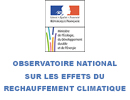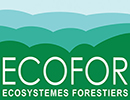Global Change and Demographic Strategies of Fish Populations
Global Change and Demographic Strategies of Fish Populations
We propose to study the response capacity of three biological models to climate change, chosen in light of their emblematic nature, the restoration projects already underway (salmon) and their ability to play a role as sentinel species for the state of biodiversity in upstream zones of hydrographical basins (Chabot).
- Salmon (Salmo salar) is a coldwater anadromous and stenothermal amphihaline migratory species, included on the Red List of Endangered Species since the 1990s. Warming has since come into play and appears to be behind the changes in life history strategies that need to be better understood in order to adjust the restoration policies currently in place. The study will aim to identify the biological and environmental factors that signal changes in living and reproduction strategies, in order to assess, in the natural milieu, the adaptation capacities of salmon populations, in the more or less long term. All of the factors will then be integrated into different scenarios (climate change and management) in order to develop decision-making tools to manage salmon populations.
- The Bullhead (Cottus gobio) is a cryophilous species that has been totally unmanipulated by man. Thermal increase impacts its reproduction and modifies its demographic strategy. Present throughout Western Europe and listed in Appendix II of the Habitats Directive, it is characteristic of the apical parts of hydrographic networks and can be considered a sentinel species. The aim here is to build a spatialised population dynamic incorporating the effects of the thermal regime, extreme hydrological events and the introduction of toxic components on the main life history traits of the Bullfish and ultimately develop a tool that can be used for viability analysis within a global change perspective. Alongside this, we will also endeavour to better understand the interactions between food resources (benthic macroinvertebrates) and fish growth.
Furthermore, we suggest two approaches aimed at:
- Testing predictions from life history trait theory in a thermal increase setting on one of the selected models (Bullfish)
- Modelling climate impact on the dynamics of freshwater fish populations from Western Africa. The biological impact of global warming is expected to be low compared to that of precipitation.
Expected outcomes in terms of environmental management
Including climate change as a factor in decision-making assistance tools with regard to salmon population management.
By completing the biological cycle model with an explicit representation of exploitation and management processes, a comparison can be made using different management simulation options according to performance criteria themselves designed for different objectives (use and conservation).
Providing system managers with simulation tool managers. Depending on the level of resources granted to the project aimed at developing a spatialised Leslie Model, a dedicated user-friendly man-machine interface could be designed. Likewise, drawing upon our meteorological work (comparing matrix models and individual-focused), ultimately, it might be possible to establish a guide for modelling population dynamics in heterogeneous environments, by putting together a checklist.
| Coordinators |
Didier PONT, Directeur de Recherche, Cemagref |
| Partnership |
Cemagref Aix en Provence, UR HYAX «Hydrobiologie» |
| Funding |
MEEDDM
|





